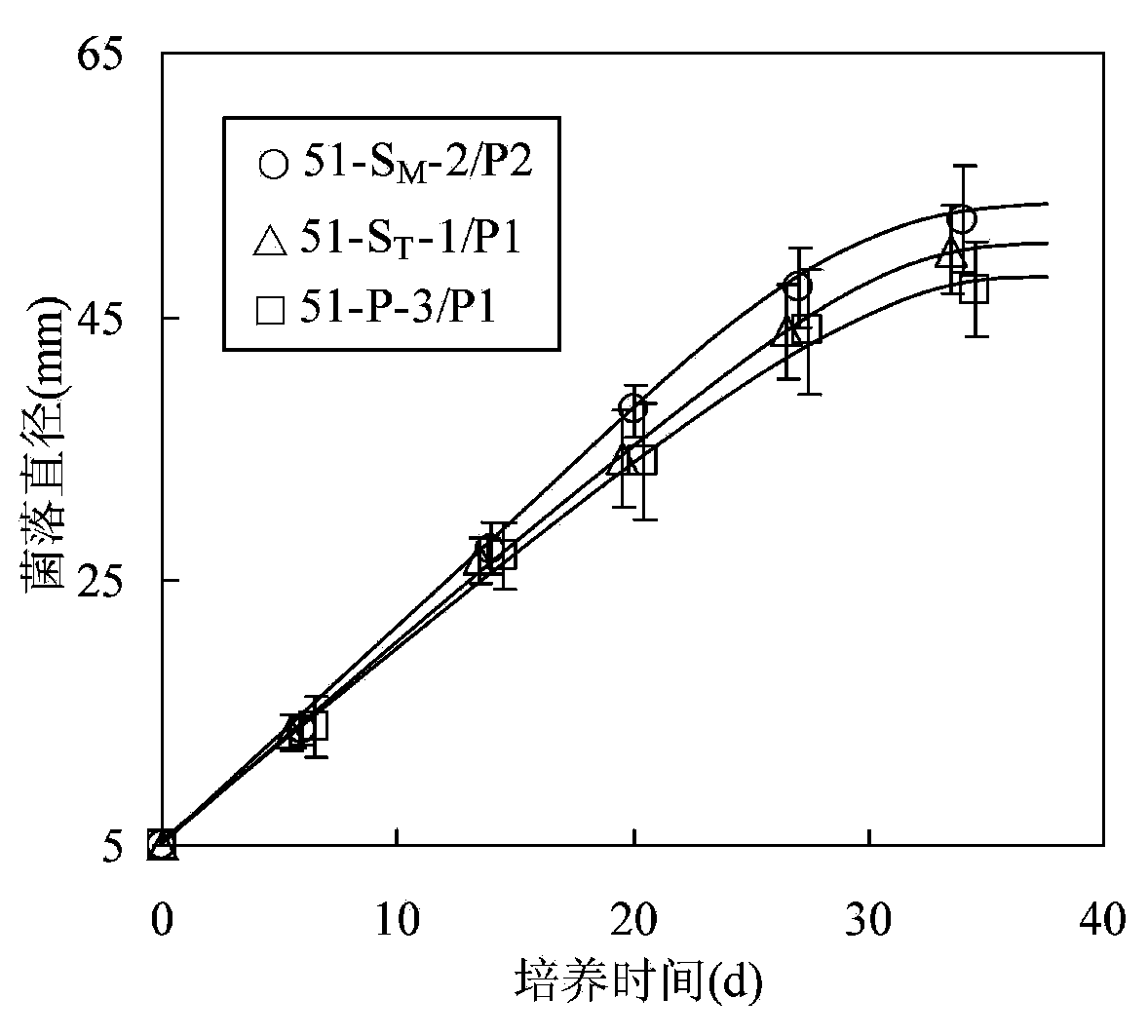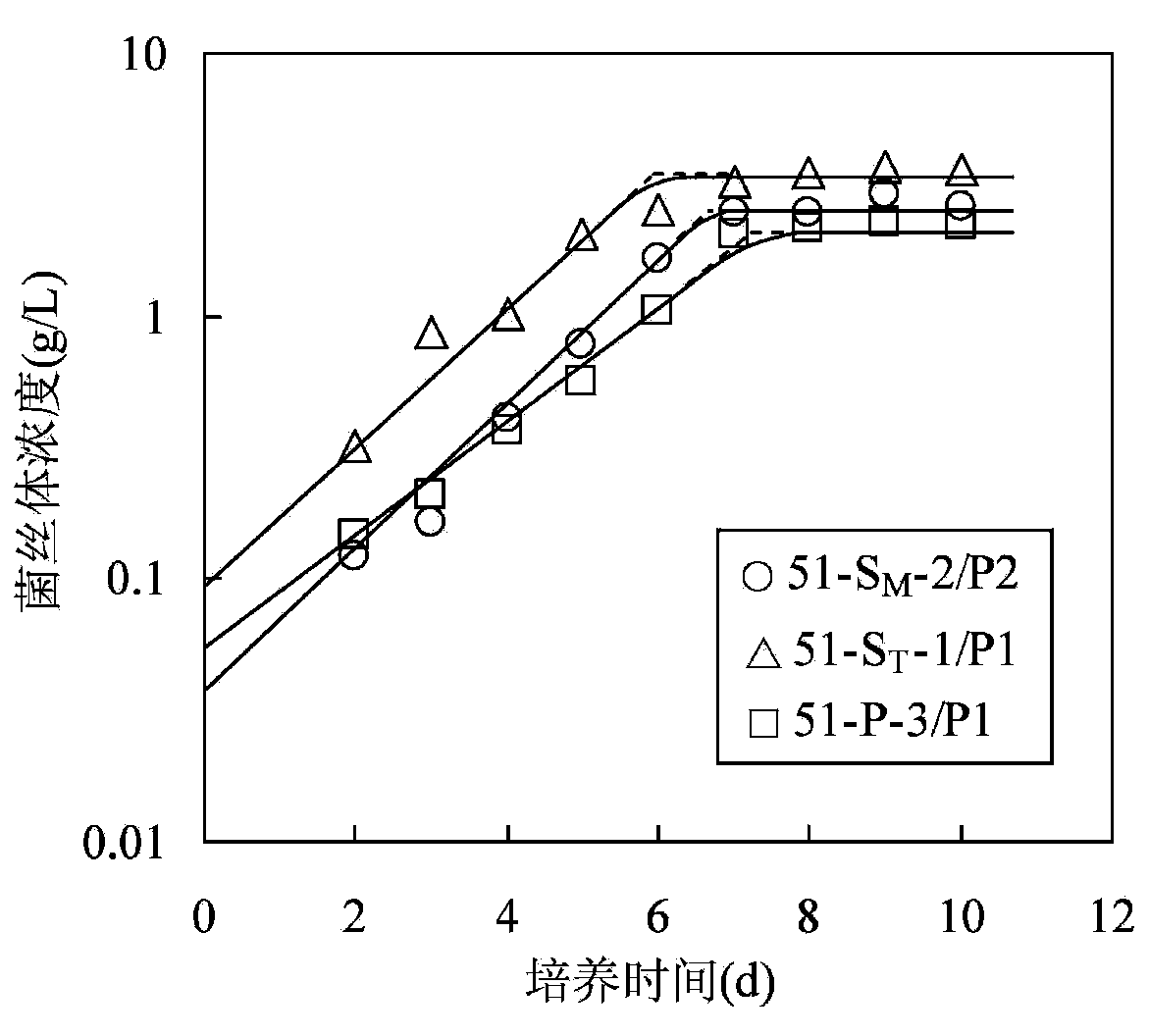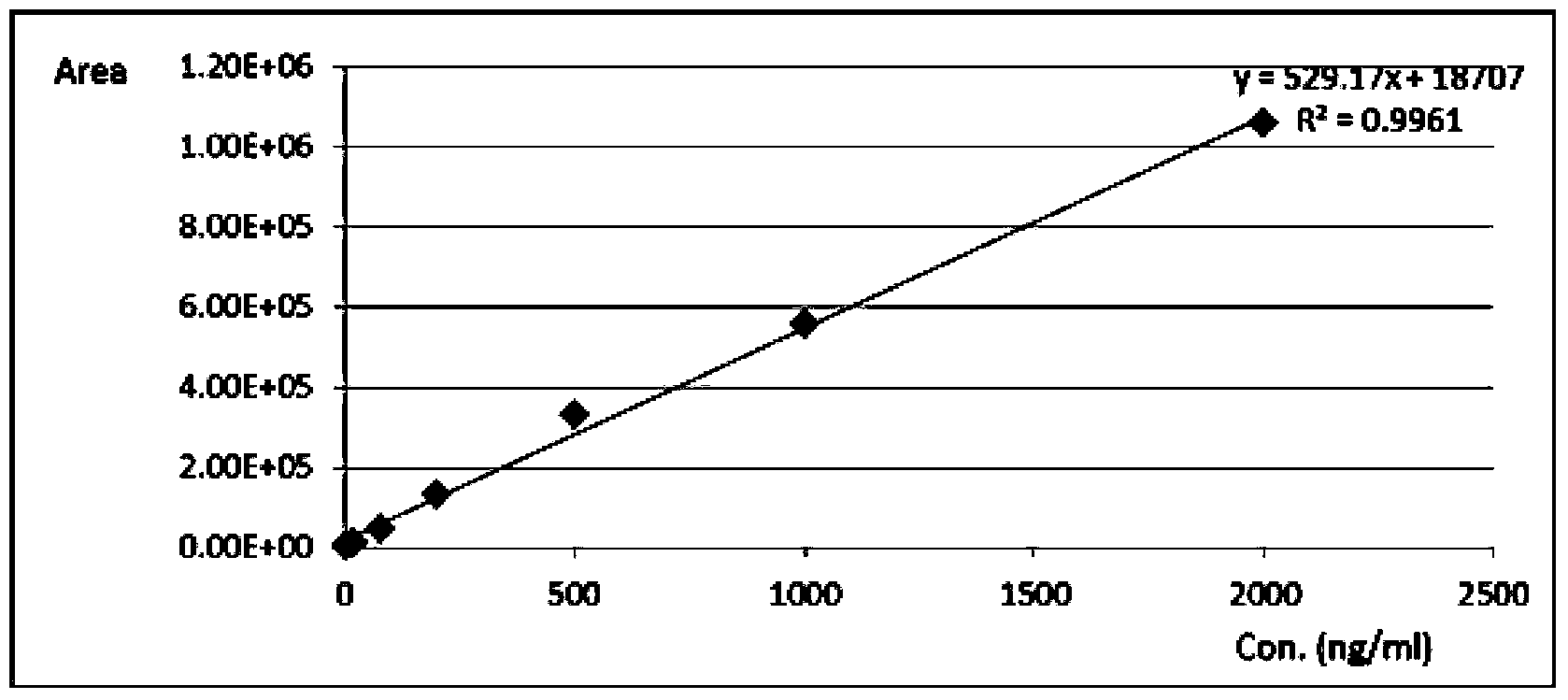Termitomyces albuminosus strain with high yield of cerebroside compounds and mycelium cultivation method for termitomyces albuminosus strain
A technology of cerebrosides and gallinaceous fungi, applied in the field of microorganisms, can solve the problems of low content of cerebrosides A and B and the like
- Summary
- Abstract
- Description
- Claims
- Application Information
AI Technical Summary
Problems solved by technology
Method used
Image
Examples
Embodiment 1
[0058] This example illustrates mycelium induction and strain purification.
[0059] 1. Collection of fruiting bodies of wild Gallus teratum
[0060] The fruiting bodies of Gallinarum albumen were collected from the mountainous area of Jianshui County, Honghe Prefecture, Yunnan Province in August 2013, numbered, and stored in a refrigerator at 4-10°C.
[0061] 2. Hyphae induction
[0062] Clean and sterilize the collected fruiting body of the wild Gallus luteum, take the tissue of the fruiting body with a scalpel, and cut into about 0.1cm 3 of small pieces. The tissue pieces (86 pieces in total) were respectively connected to test tubes equipped with slant medium, placed in a constant temperature incubator at 25° C. for 5-16 days, and hyphae of each tissue were induced. The slant medium was prepared as follows. Recipe (g / L): Potato extract powder 15, glucose 20, agar 20, yeast extract powder 2, pH 5; sterilize at 121°C for 20 minutes; cool to about 60°C at room temperatu...
Embodiment 2
[0066] This example illustrates the screening of strains.
[0067] 1. Cell culture.
[0068] strain 51-S M -2 / P2, 51-S T -1 / P1 and 51-P-3 / P1 were used as objects for strain screening.
[0069] Try to select colonies with the same growth potential, punch holes at the edge of the plate colony with a sterile puncher with a pore diameter of 5 mm, take out circular colony slices with a diameter of 5 mm, and inoculate to a new plate medium (formula (g / L): potato Extract powder 15, glucose 20, agar 20, yeast extract powder 2, pH5). Each bacterial strain was connected with 6 plate mediums, and each plate medium was connected with 3 bacterial blocks. Cultivate at a constant temperature of 28°C, measure the diameter of the colony regularly, and observe the color, shape and growth of the colony.
[0070] figure 1 Indicates the change of colony diameter of each strain during plate culture. 27 days before plate culture, strain 51-S M -2 / P2, 51-S TThere was no significant differenc...
Embodiment 3
[0095] This example illustrates the identification of bacterial species.
[0096] 1. Morphological identification.
[0097] The conidia of the strain CTM-1 were oval, with a size of 5-10 μm×10-15 μm. The mycelium is less branched, with a diaphragm, no lock joints, and the diameter of mycelium is about 5-7μm; The characteristics of mycelium and conidia of this strain are consistent with those of Termitomyces albuminosus (Nie Xiaodong, optimization of submerged fermentation conditions for mycelia and saponins [D]. Jiangnan University, 2009). like Figure 5 shown.
[0098] 2. Molecular biological identification.
[0099] The 18SrRNA sequence of the fruiting body raw material (Fruiting body-5) used for mycelia induction is as follows:
[0100]
[0101] The 18S rRNA sequence of strain CTM-1 is as follows:
[0102]
[0103] Using the sequence local similarity query system BLAST (National Center for Biotechnology Information, USA), the 18S rRNA sequences of fruiting body ...
PUM
 Login to View More
Login to View More Abstract
Description
Claims
Application Information
 Login to View More
Login to View More - R&D Engineer
- R&D Manager
- IP Professional
- Industry Leading Data Capabilities
- Powerful AI technology
- Patent DNA Extraction
Browse by: Latest US Patents, China's latest patents, Technical Efficacy Thesaurus, Application Domain, Technology Topic, Popular Technical Reports.
© 2024 PatSnap. All rights reserved.Legal|Privacy policy|Modern Slavery Act Transparency Statement|Sitemap|About US| Contact US: help@patsnap.com










